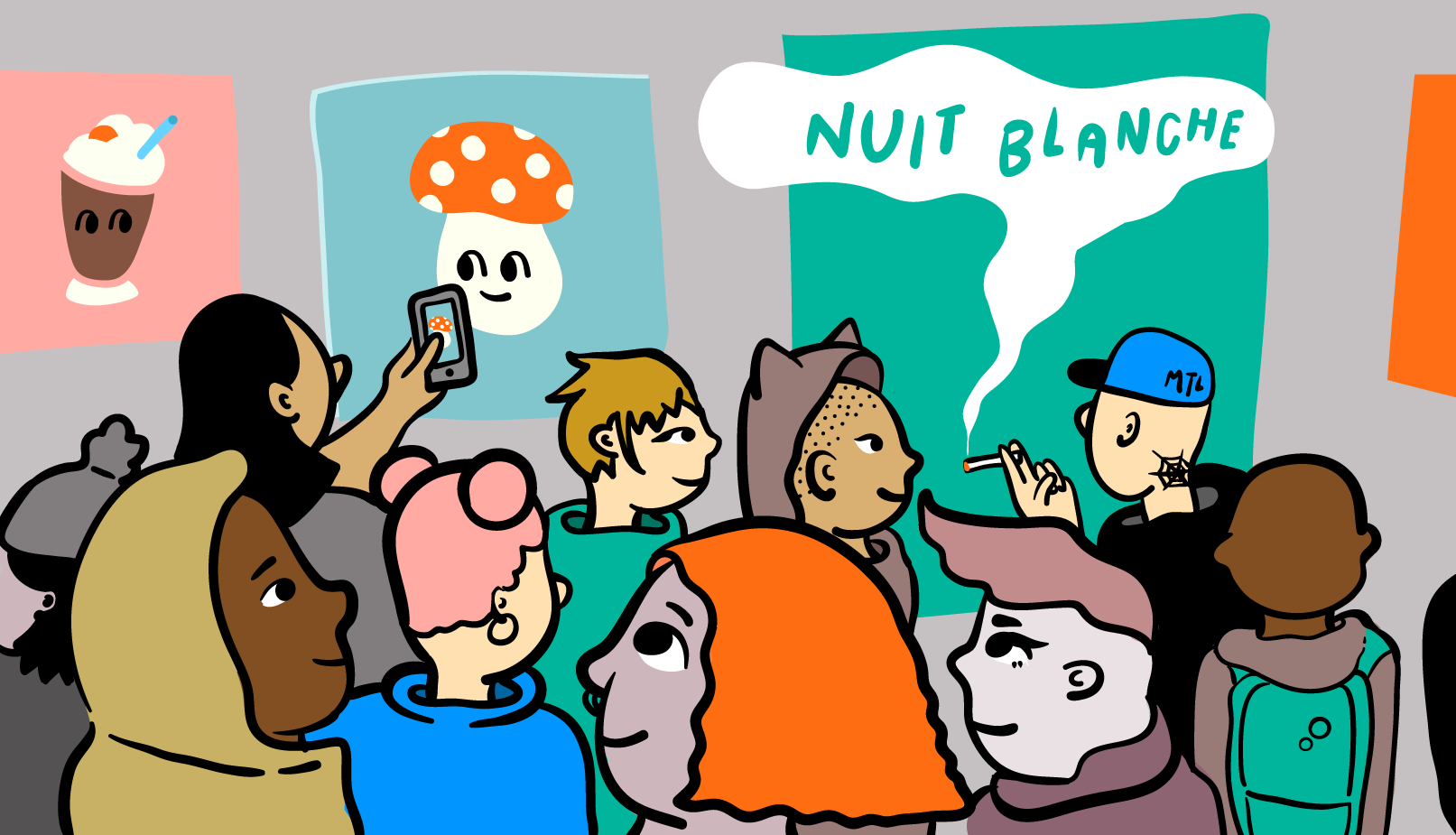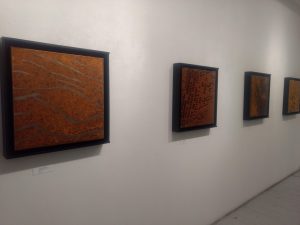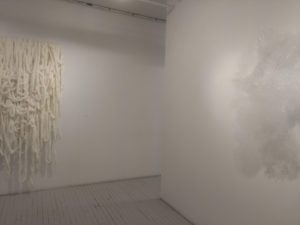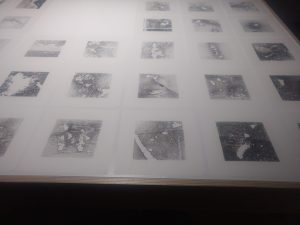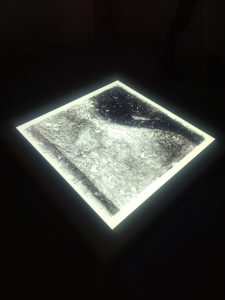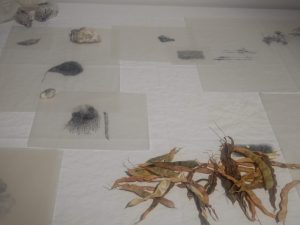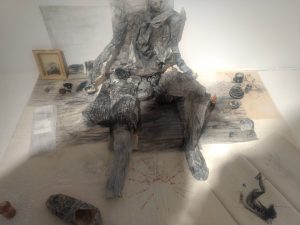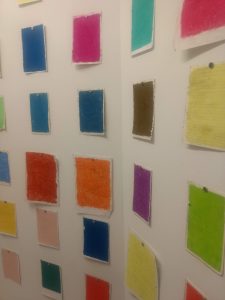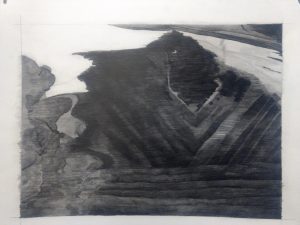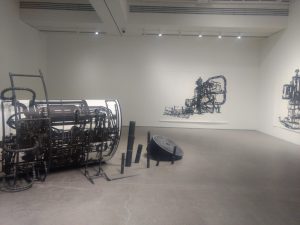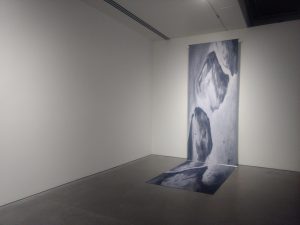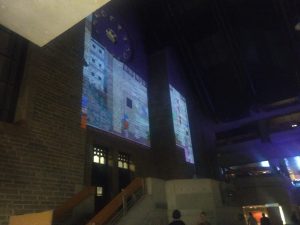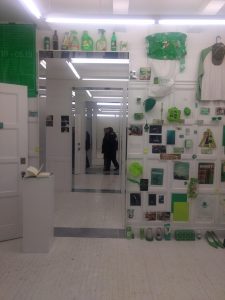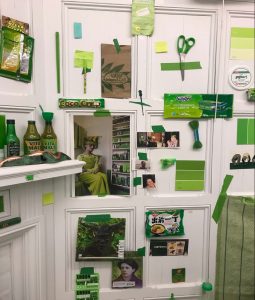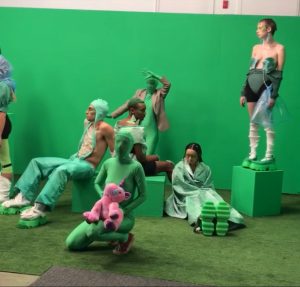We didn’t do Nuit Blanche together, but we might as well have. Two arts writers vs Nuit Blanche. The apathy is real. We were slightly amused. And we’re still thinking too much about the colour green (and outer space?)
Chloë Lalonde, Arts Editor, etc., The Concordian
Nuit Blanche only really came onto my radar when I was in CEGEP, I guess some would consider that a late discovery. My best friend and I visited the Musee d’Art Contemporain (MAC) for one of their fantastic nocturnes. We had special drinks, I don’t remember much of the exhibition (it might have been David Altmejd) and exited the museum directly on Ste-Catherine Street. Little did we know of the wonderland that waited for us outside. Ah, a time when you didn’t have to book your slide/ferris wheel/zipline experience in advance… It was the best surprise.
Since then, Nuit Blanche has been lackluster, ridden with food anxiety, too much beer, long lines and the wrong activities (yeah, I’m talking about “wand-making” at Lockhart).
This year I decided I would spend my Saturday evening after a long day of teaching and laying out the arts and opinions sections of the paper, visiting as many galleries as I could manage with my sister. We met up quite early at the Belgo building (372 Ste-Catherine St. W.), before things were popping, and managed to pass by every gallery that was open, before stopping by the very crowded MAC, UQAM’s art gallery, a surprise performance we weren’t expecting and finishing off with Le Livart.
The Belgo is unassuming, if you didn’t already know it was home to 27 galleries, several artist studios, savvy startups and dance studios, it would be hard for you to find out. The exterior isn’t necessarily inviting, neither is the lobby and the adjacent cafe (I found a hair in my crepe and they gave me a free latte.)
It was my sister’s first time there and she had no expectations, but I didn’t want to disappoint. I did force her to cancel her unmade plans with her friends to hang out with me, after all. We rode the elevator up to the fifth floor (which is truly the sixth), and wove our way in and out of galleries uninterested until I started to notice a grand theme. Every gallery featured some kind of moon print. Drawings or lithographs, etchings, paintings––like craters on the moon––everything felt geographical, alluding to the earth and the landscape.
AMER, an artist from Montreal, paints with rust in their exhibition at Galerie Luz, using hydrogen, oxygen and carbon—what AMER considers among the essential elements for the appearance of life. Their work returns to the origin of the medium, with natural hues and industrial materials to reference ancient cave paintings and transmit modern messages over time.
Past a wall separating Galerie Luz in two, lived fibre works that felt entirely alien to AMER’s practice. White and fluffy, interrupted by copper threads and plastics, Mariela Borello’s tapestries connect to the body.
Later, at UQAM’s art gallery, the moon prints returned. Only this time they were in the forms of massive paper tapestries and sculptures disappearing into the floor. These rooms of earth and stone, on until March 21, compiled the incredibly similar practices of Michel Boulanger and Katja Davar.
Boulanger’s Girations, Rouler 1 was absolutely mesmerizing. A jeep-esque vehicle sinks and resurfaces, only to sink again, creating new landscapes with each dip. Davar’s drawings resonate on the same frequency. Each piece is like witnessing the plans for a new earth, land and soil.
The theme this year was “vert,” and events and exhibitions generally referenced the colour, sustainability and the environment throughout. Green is symbolic for many things, most notably, growth, whether natural/environmental, economic or personal, it’s said to be healing and inspire creativity.
Some works were all too literal; Le Livart had an exhibition up the whole month of February based solely on the colour green, and others were just flat out unrelated and overpopulated (collection exhibitions at the MAC).
Oh, and I can’t forget the performance we walked into on our way home, which was, arguably, my sister’s favourite part. Mourning of the Living Past, performed by Inflatable Deities, Canadian artists Jessica Mensch and Emily Pelstring, shook their futuristic “organic sparkly energy” all over UQAM’s Judith-Jasmin pavilion. It truly infected my 18-year-old sister. She danced along with them (behind the crowd) as I filmed her. She also changed her Instagram bio to “organic sparkly energy,” which I’m pretty sure is what the glittery duo chanted into their electronic amplifiers.
Sophia Arnold, Contributor for The Concordian and CUJAH Editor-in-Chief
For the past five years, since I moved to Montreal, Nuit Blanche has been something to look forward to in the depths of your depressive episodes at the height of winter, mostly because the metro is open all night and the thought of riding public transit at 4 a.m. is overwhelming for a green-minded, uber-despising person. It gives a cosmopolitan New York vibe that Montreal aspires to everyday but can only afford to cave into twice a year (the other night being New Years Eve).
Nuit Blanche attracts all kinds of people: those who have kids and want to take them on the mini Ferris wheel at Place des Arts before retiring after “doing Nuit Blanche,” tourists who are just happy to be wherever they end up (admittedly, me the first two years…), and Montrealers who know where to be and will not give you the time of day if “you’re not from Montreal.”
My night started at Le Livart. I had been there a few times before but never on Nuit Blanche, although my partner had and was enamoured with the basement dance floor. The layout of the place reflects its roots as an old residential home, and still allows for artists-in-residence to use the upstairs rooms as studios. For Nuit Blanche, they had many artists exhibiting their works on the ground floor, and opened the upstairs, inviting you to speak with the gallery’s resident artists.
The exhibition went through all the various interpretations of this year’s theme, green, in all its facets. Livart expanded on the ideas presented in Vert, Histoire d’une couleur by Michel Pastoureau, who highlights green as a central colour in the role of art history. As you enter, Renaud Séguin’s green, ‘cabinet of curiosity’ style room welcomes you into a literal green space. Filled with found objects, from candy wrappers to paint colour samples, and some iconic references, like a picture of The Green Lady (@greenladyofbrooklyn), it’s like entering a commodity forest; our new image of green.
Other rooms in the gallery welcomed the interpretation of ‘green’ to be detourned headlights, bricolage wreaths placed on the ground and large-scale photography. Due to the variety of mediums included, when you left Le Livart you were very aware what role the colour and ideology of green plays in contemporary art.
Next stop was Palais des Congrès, where we saw some of the works featured in this year’s Art Souterrain underground exhibitions, running until March 22. The piece we spent the most time with was the automated metro doors in sequence that opened as you walked through the hallway of them. It was an unexpected yet retrospectively predictable surprise seeing as the delapidated metro cars are the subject of many interactive installations throughout the city, highlighting the history and development of an iconic feature of Montreal daily life.
Next on the agenda; Phi Centre. I don’t really know where to begin with this one. As a self identifying ‘antenna,’ Phi Centre hosts a variety of events showcasing the latest tech developments, and this night was no exception. The show, Simulation/Acceleration, was built on the premise of human connectivity, digital capitalism and environmental degradation, exploring the topic with Virtual Reality (VR), augmented reality and a green screen interactive performance. DJ sets also took place throughout the night with visuals.
Life on the green screen was the highlight of the show. Mesmerized by the piercing gaze and dynamic movement of the performers in an array of outfits and positions, it was an ominous presence that rarely broke—apart from when viewers were invited to enter the green screen setup and the rare drunk guy did a peace sign. The screen showing the results of the green screen performance embodied the premise of the show, deconstructing the commonplace ideas of humans as apart from the environment and autonomous players in a hyperconnected world.
After a necessary food detour, we headed to Places des Arts, which was a short stop. Eying it through the crowds of people, we decided to skip it this year as it has an overdone, commercial vibe that we weren’t looking for (signified by the giant maple syrup cans).
Final stop: Eastern Bloc. The event aimed to create an urban oasis and safe space for freedom of expression and being, which it did through Allison Moore’s installation, The Enchanted Woods and various DJ sets with a dance floor in the usual exhibition space. Running until 4 a.m., it felt like a liberation from winter and greyness, taking you out of time and space to a utopic non-place—even though they ran out of drinks and you had to wait 30 minutes for the bathroom, which kind of brought you back down to earth.
All in all, it was an extensive, involved and jovial evening. But, we wish this programming was accessible at a substantial level throughout the year. In one evening, you go to four events before your corporeal limit is reached and you miss events that cannot be experienced again. In an ideal green utopia devoid of money, the metro would run 24 hours a day and every night would be an opportunity to engage with your local and international communities in such a monumental way, like the way you can on Nuit Blanche.
Graphic by @sundaeghost
Photos by Chloë Lalonde and Sophia Arnold.
